Discover 12 wild animals in Saguaro National Park with our guide to the best spots for sightings and photos. Adventure awaits!
Ready for an animal adventure in the heart of the desert? Saguaro National Park is buzzing with more than just its famous cacti; it’s a hotspot for wildlife spotting!
We’ve hit the trails and have the lowdown on 12 wild creatures you’re likely to encounter, from cunning coyotes to regal roadrunners.
This guide isn’t just about the thrill of the find; we’ve got photos and tips on where these desert dwellers like to hang out.
Get set to meet the locals of this Arizona wonderland—each animal sighting is a natural treasure waiting to be discovered!
Coyotes
Coyotes, large mammals seen in Saguaro National Park are intelligent and adaptable animals are often seen traveling in small packs or pairs in search of food.
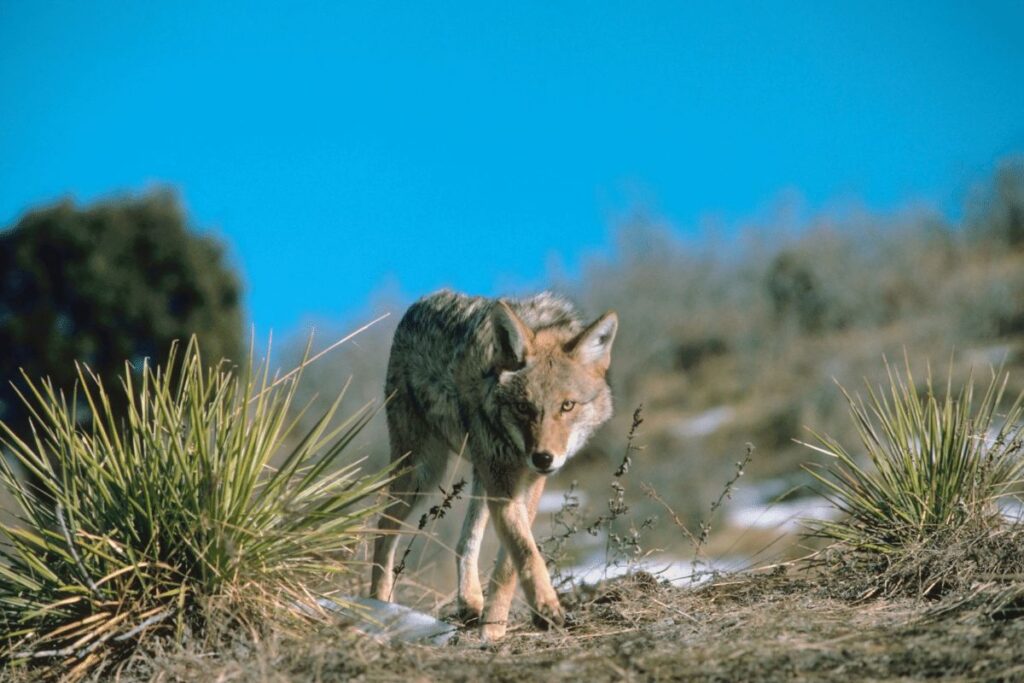
While they typically avoid humans, coyotes have been known to approach hikers in hopes of snatching a quick snack. It’s important to remain alert and keep your distance if you encounter one of these curious creatures while out on the trail.
When hiking in Saguaro National Park, it is important to remember that coyotes are wild animals and should not be fed.
Even leaving food unattended can lure the animals close and lead them to become more comfortable around humans, making the animal’s behavior less predictable. By giving food to these wild animals, we risk teaching them to associate people with potential meals.
Always remember: never feed coyotes! Additionally, make sure any garbage or food scraps are securely contained in a bear-proof container.
Coyotes can be destructive when it comes to looking for an easy meal, so significant damage to picnic areas or campsites can occur if they get access to the trash.
Foxes
Saguaro National Park is teeming with animal life! On our recent hike, we saw all sorts of animals, including foxes!
There are two species of foxes that call Saguaro National Park home: the red fox and the gray fox. Both are relatively small, with adult red foxes weighing in at around 8 pounds and gray foxes averaging about 10 pounds.
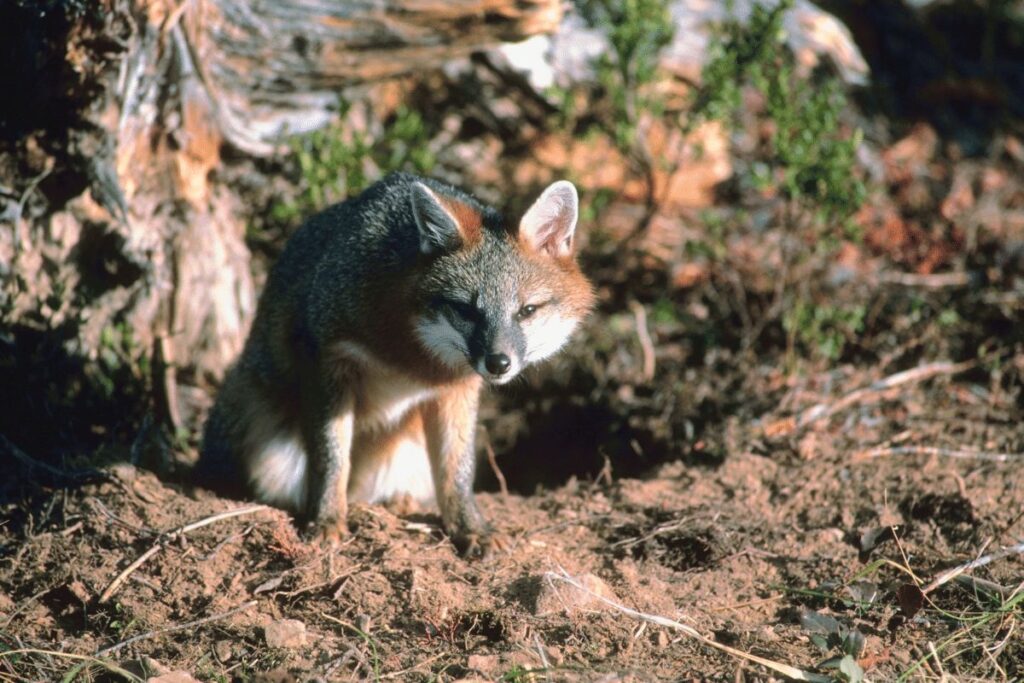
We didn’t see any red foxes on our hike, but we did see several gray foxes! These cunning little creatures were skittish at first, but eventually came close enough for us to get some good photos.
If you’re lucky enough to spot a fox while hiking in Saguaro National Park, be sure to give them plenty of space and admire them from afar. These beautiful animals are an important part of the park’s ecosystem and we’re so glad we had the chance to see them up close!
Jackrabbits
Saguaro National Park is home to a variety of wildlife, including several species of jackrabbits. While we were hiking, we saw several jackrabbits running around and hopping through the desert brush.
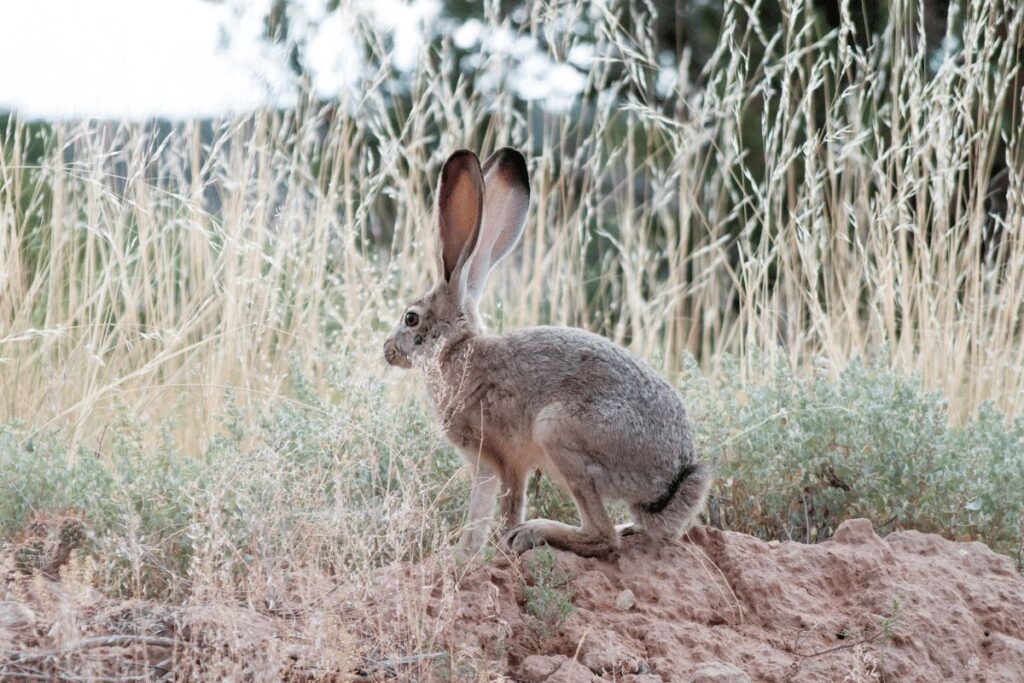
Jackrabbits are actually not rabbits at all, but rather hares. They are larger than rabbits and have longer legs, which allow them to run up to 40 miles per hour! Jackrabbits are well-adapted to the desert environment and can go without water for long periods of time. They get most of the moisture they need from the plants they eat.
If you’re lucky enough to see a jackrabbit while you’re hiking in Saguaro National Park, be sure to take a few moments to watch this amazing creature in action!
Bobcats
The bobcat is a small to medium-sized cat that is found throughout North America. They are most active at night, but can sometimes be seen during the day. Bobcats typically live around 12 years in the wild.
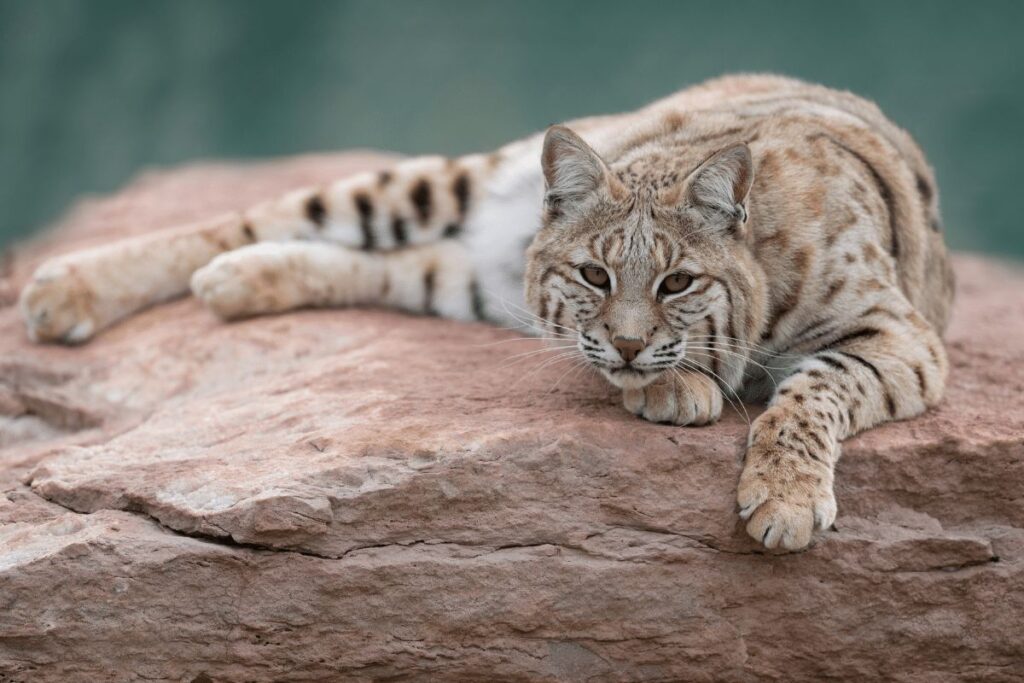
We spotted several bobcats while hiking through Saguaro National Park. They were usually alone, but we did see a few pairs together. The bobcats were very curious about us and would watch us as we hike by. We even had one walk right up to us and sniff our hands!
It was an amazing experience to see these beautiful animals in their natural habitat. If you’re lucky enough to spot a bobcat while visiting Saguaro National Park, be sure to enjoy the moment and take in their beauty.
Roadrunners
Saw a roadrunner!
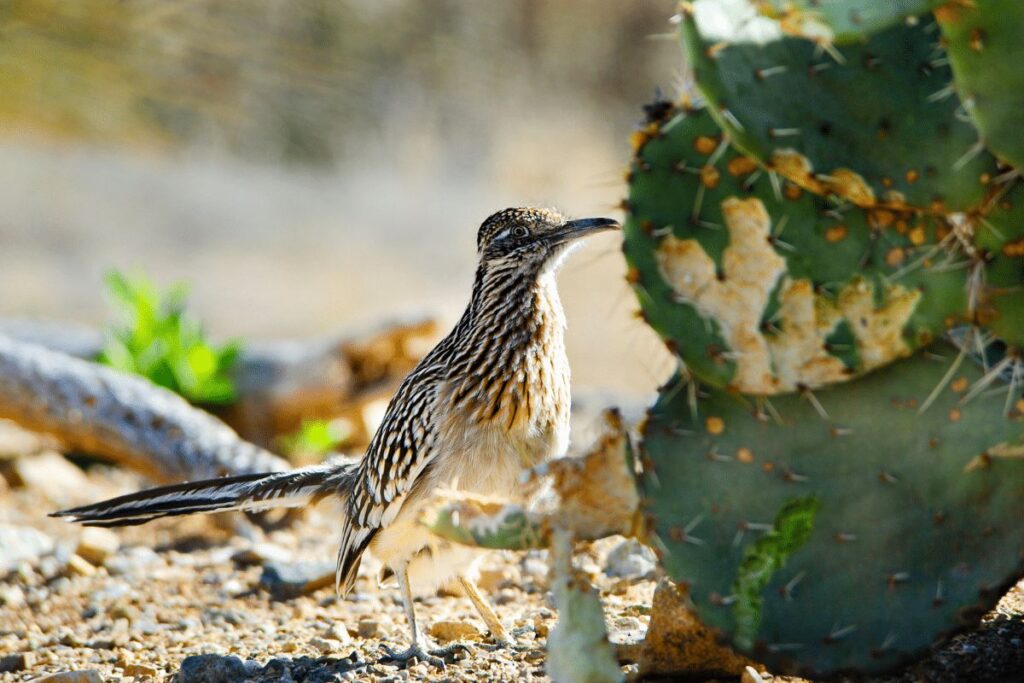
Roadrunners are really cool, fast birds and they’re the official state bird of New Mexico.
They live in open, desert areas and sandy roadsides. They feed on small animals like insects, lizards, snakes, and other birds. They even eat scorpions!
Roadrunners can reach speeds of up to 20 miles per hour and can travel long distances quickly. They don’t need much water and only drink once every other day.
These energetic birds are quite social, living in small flocks or pairs which often stay together for life. They make loud crowing sounds to communicate with others of their species.
Their mating ritual consists of a series of elaborate courtship dances which they perform together to attract one another.
Roadrunners have become famous because of the Looney Tunes cartoons but they are actually real birds! They’re part of the Cuckoo family, but unlike their relatives, roadrunners usually fly short distances at low altitudes instead of migrating across large bodies of water.
Hummingbirds
Saguaro National Park is home to a variety of wildlife, including several species of hummingbirds. While we were hiking, we saw several of these little birds flitting about the flowers and cacti.
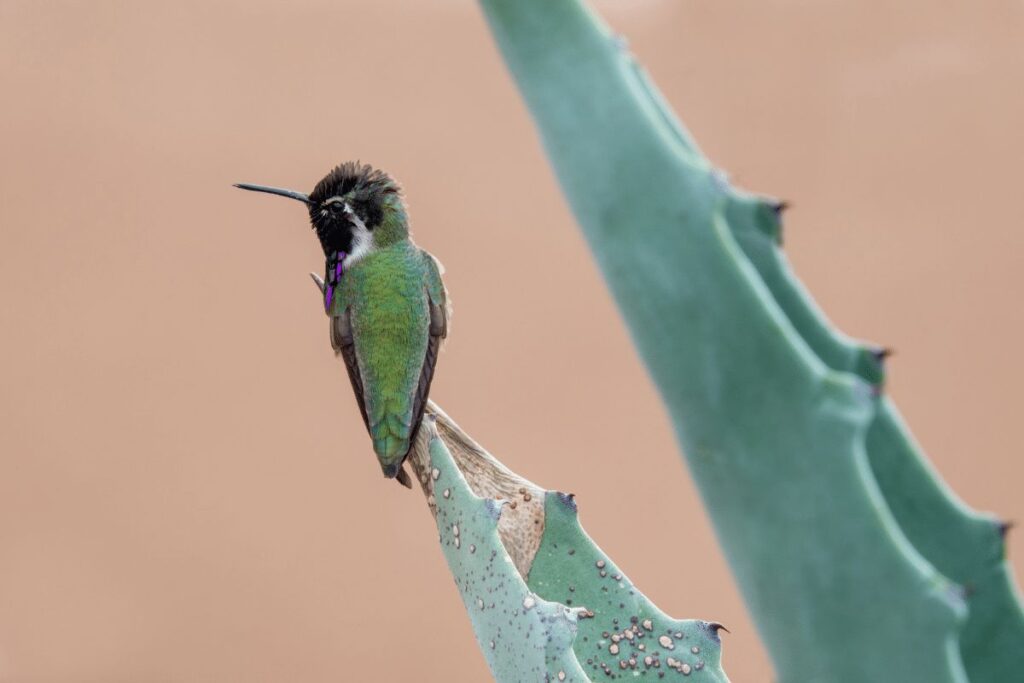
There are four species of hummingbirds that call Saguaro National Park home: the black-chinned hummingbird, Costa’s hummingbird, Anna’s hummingbird, and the broad-tailed hummingbird. All four of these species are small, measuring only 3-5 inches in length. They are also incredibly fast, beating their wings up to 80 times per second!
Interestingly, Hummingbirds are the only birds that can fly backwards. They use this ability to hover in front of flowers while they sip nectar with their long tongues. While they primarily eat insects and nectar, they will also occasionally eat tree sap or small lizards.
If you’re lucky enough to see one of these beautiful creatures while hiking in Saguaro National Park, take a moment to appreciate their beauty and speed!
Mountain Lions
Mountain lions, or cougars, are the apex predators in North America. Saguaro National Park is home to a healthy population of these magnificent creatures. We were fortunate enough to see several while hiking through the park.
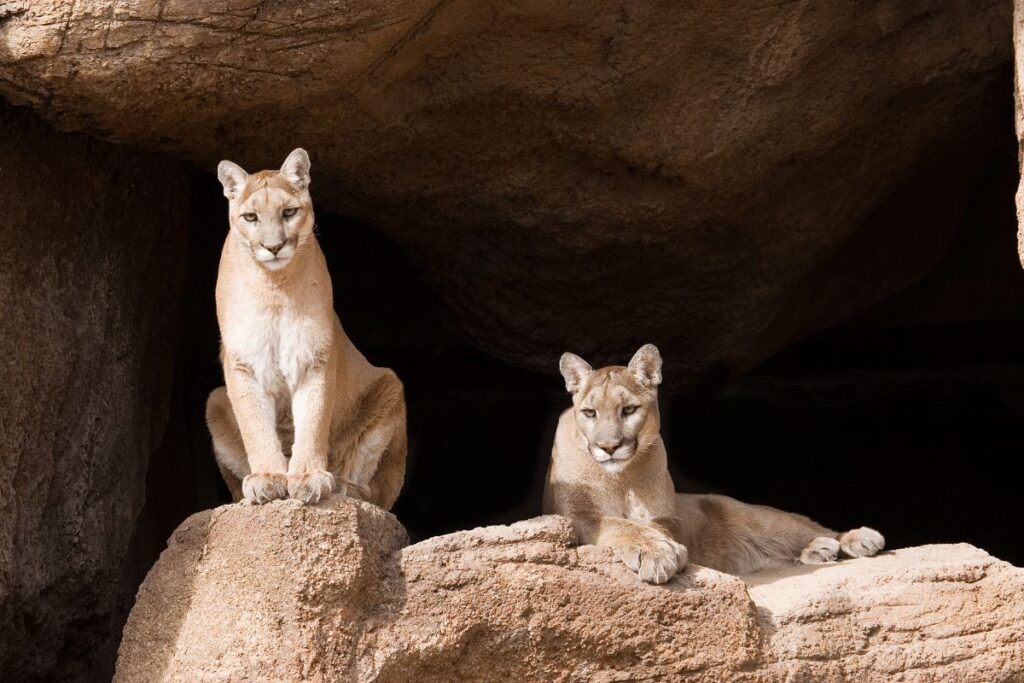
Mountain lions are typically shy and elusive, so spotting one in the wild is a truly special experience. These animals are incredibly powerful and can take down prey much larger than themselves.
While they mostly stick to hunting within their own territory, mountain lions will occasionally venture outside of their home range in search of new food sources.
While hikers should always be aware of their surroundings when hiking in mountain lion territory, there is no need to be unduly afraid of these animals. Attacks on humans are incredibly rare, and most mountain lions will go out of their way to avoid confrontation.
However, it is still important to be cautious and give them plenty of space if you do encounter one on the trail.
Desert Tortoises
Desert tortoises are found in Saguaro National Park. They are a species of concern and are protected by state and federal law. The best time to see desert tortoises is from April to June. during the cooler months. Tortoises can often be seen basking in the sun on warm days.
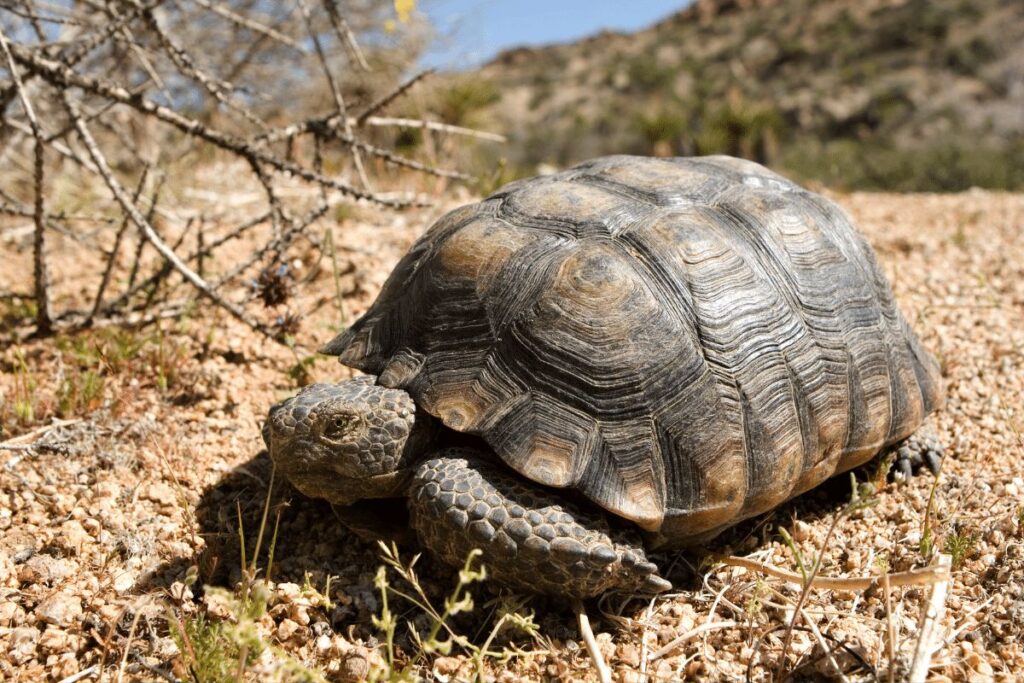
In order to help protect desert tortoises and their habitat, visitors should be sure to avoid disturbing these animals while they are in the park. Trash left behind could attract predators or other animals, which could potentially harm the tortoises.
Visitors should stick to established trails, staying away from areas where the tortoises tend to gather. Driving off-road is not encouraged and could damage important habitats.
Javelinas
Javelinas are often seen roaming in packs in Saguaro National Park. typically, these animals are shy and avoid humans. However, if they feel threatened, they may become aggressive and charge at people or other animals.
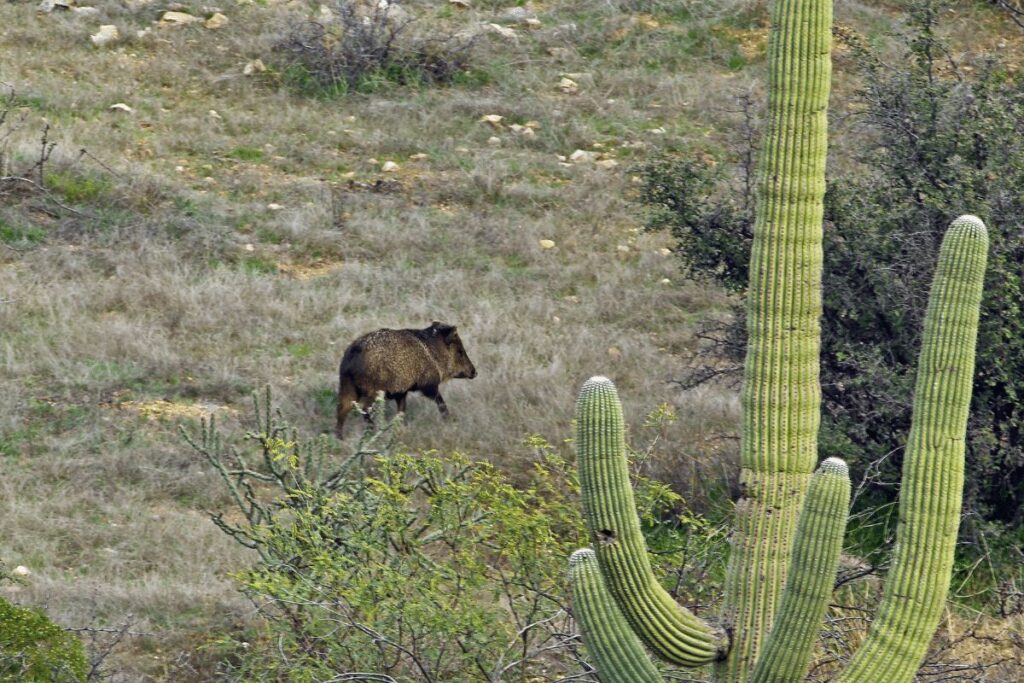
Javelinas are members of the peccary family, which are related to pigs, and are native to the southwestern United States. They have short faces, short legs with curved hooves and thick fur ranging from gray-brown to reddish-brown in color.
They can grow up to two feet tall and weigh up to 50 pounds. They feed on cacti, fruit, roots and small animals like lizards, snakes and insects.
Ringtail
The ringtail is a small, fox-like mammal with a long, bushy tail. It is native to the southwestern United States and Mexico. Ringtails are excellent climbers and can often be seen in trees or on rocky ledges. They are shy animals and are most active at night.
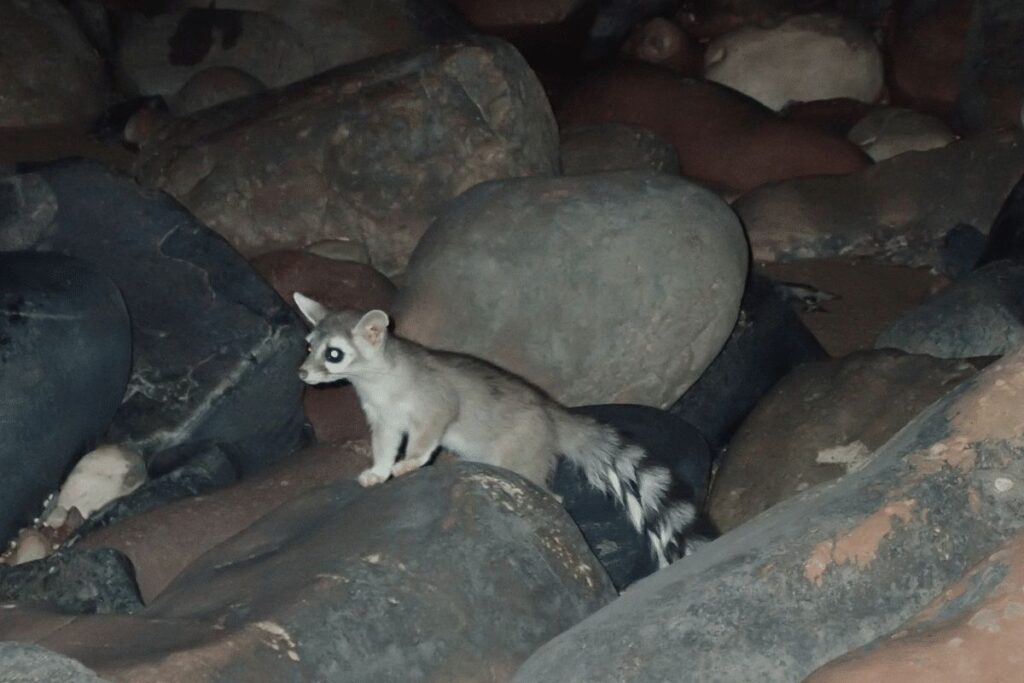
Ringtails are omnivorous, eating a variety of fruits, vegetables, insects, small mammals, and birds. They often cache (or store) food for later consumption. Ringtails are solitary creatures except during the breeding season or when raising their young.
Breeding season for ringtails typically occurs from February to May. After a gestation period of about two months, one to six young are born blind and deaf. The young open their eyes at about three weeks old and begin to walk and climb soon after that. They are weaned at about two months old but remain with their mother until they reach sexual maturity at around one year of age.
Ringtails have few natural predators but can fall prey to bobcats, coyotes, owls, and eagles. Humans sometimes trap or hunt ringtails for their fur which is used in making hats, gloves, and other items of clothing
Rattlesnakes
Rattlesnakes are one of the most common animals in Saguaro National Park, and they can be found in all habitats within the park. While they are not aggressive, they will defend themselves if they feel threatened.

If you see a rattlesnake while hiking, give it plenty of space and do not try to handle it.
Rattlesnakes use their fangs and venom to hunt small animals like rodents. They will often hide in logs, piles of wood and rocks, or underground burrows.
It is important to be aware of your surroundings and to look before reaching under objects while walking in Saguaro National Park. Keeping your eyes open for rattlesnakes can help you avoid an unpleasant encounter.
Western Screech Owls
On our hike through Saguaro National Park, we saw many different types of animals. One of the most interesting was the Western Screech Owl.
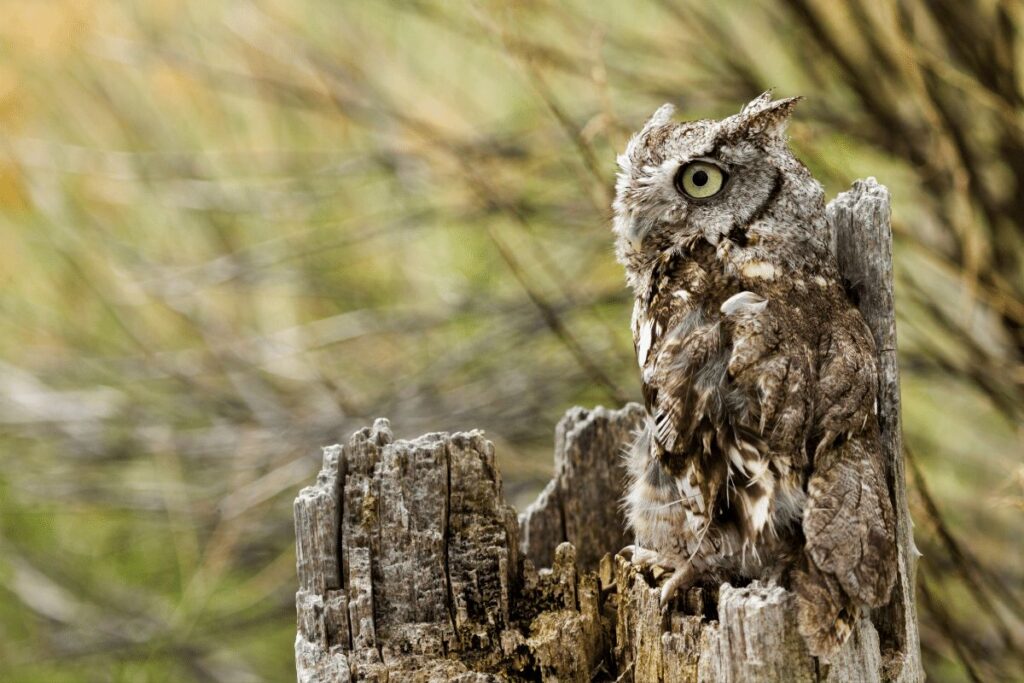
The Western Screech Owl is a small owl with a round head and ear tufts. It has brown and gray plumage with white streaks on its breast. The owl’s eyes are large and yellow. It nests in trees, cliffs, and cavities in logs or stumps.
The Western Screech Owl feeds on insects, rodents, and small birds. It hunts at night, using its acute hearing to locate prey. The owl flies silently through the air to capture its prey with sharp talons.
We were lucky enough to see a Western Screech Owl perched in a tree near the trail. It was a beautiful sight!
Habitats and Ecosystems to See Animals in Saguaro National Park
There are three different habitats in Saguaro National Park: the Sonoran Desert, the Rincon Mountain foothills, and the Santa Catalina Mountains. Each of these habitats has a different climate and different plants and animals.
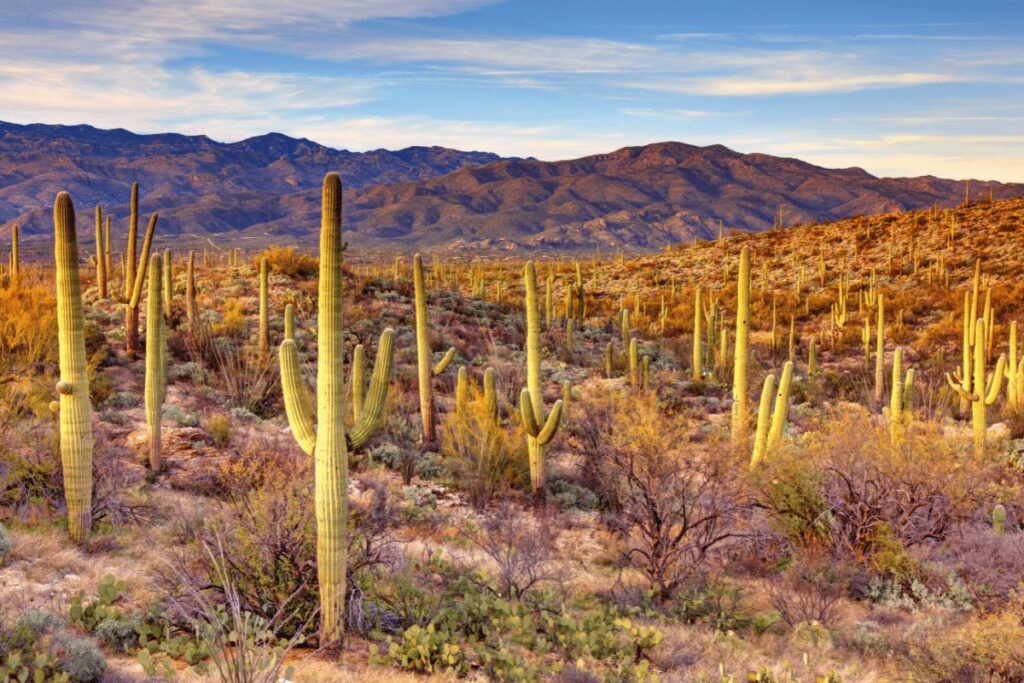
The Sonoran Desert is the largest habitat in Saguaro National Park. It has a hot, dry climate with very little rain. The plants in the Sonoran Desert are adapted to this dry climate. They have deep roots that help them store water. There are also many cacti in the Sonoran Desert. The animals in this habitat include lizards, snakes, coyotes, javelinas (a type of wild pig), and foxes.
The Rincon Mountain foothills habitat is cooler and wetter than the Sonoran Desert. This habitat gets more rain than the desert because it is at a higher elevation. The plants in this habitat include oaks and pines. The animals in this habitat include black bears, deer, squirrels, and skunks.
The Santa Catalina Mountains are the highest mountains in Saguaro National Park. This habitat is cool and wet with high amounts of rainfall. The plants in this habitat include evergreens such as fir trees and spruce trees. The animals in this habitat include birds such as eagles and hawks, as well as deer, elk, and mountain lions.
Each of these habitats has its own unique ecosystem that supports a variety of plants and animals. All of them are important components of Saguaro National Park and provide visitors with an amazing array of wildlife and scenery.
Conclusion
We had a wonderful time exploring Saguaro National Park and seeing all the incredible wildlife it has to offer. It never ceases to amaze us just how diverse and bustling with activity our world can be, even in one small area like this.
From rabbits hopping around to roadrunners darting across trails, we were lucky enough to come away from our hike with memories of 12 animals that live within Saguaro National Park’s boundaries.
Whether you’re an amateur birder or just looking for a unique outdoor experience, take the chance while you can to explore this desert oasis!


